Silvery Lupine, Silver Stem Lupine - Lupinus argenteus
|
Lupinus argenteus - Silvery Lupine, Silver Stem Lupine.
Lupinus (Lupine) is a large genus of over 200 species, mostly from western North and South America, but also found in temperate and tropical areas else of Mediterranean Europe and Africa. The genus name is from the Latin for wolf, so named in a belief that it was harmful to soils. There are a few species also found in the eastern United States; a couple native and a couple naturalized. The most distinctive feature common to the genus seems to be the palmately compound leaves with 5 to 11 leaflets which are usually much longer than they are narrow. The plants carry terminal inflorescences with flowers classically pea-like. The plants in this genus - especially the seeds - are toxic, and can be harmful or even fatal if ingested.
Lupinus argenteus is perhaps the most widely distributed Lupine species of the western North America, found in most states from the eastern approach to the Rocky Mountains through the mountains in the western coastal states and southwestern Canada. It is a striking addition to a variety of open and wooded valley and mountain habitats. There are a several recognized subspecies.
Found in:
AZ, CA, CO, ID, KS, MT, ND, NE, NM, NV, OK, OR, SD, UT, WA, WY | 
Distribution of Lupinus argenteus in the United States and Canada:
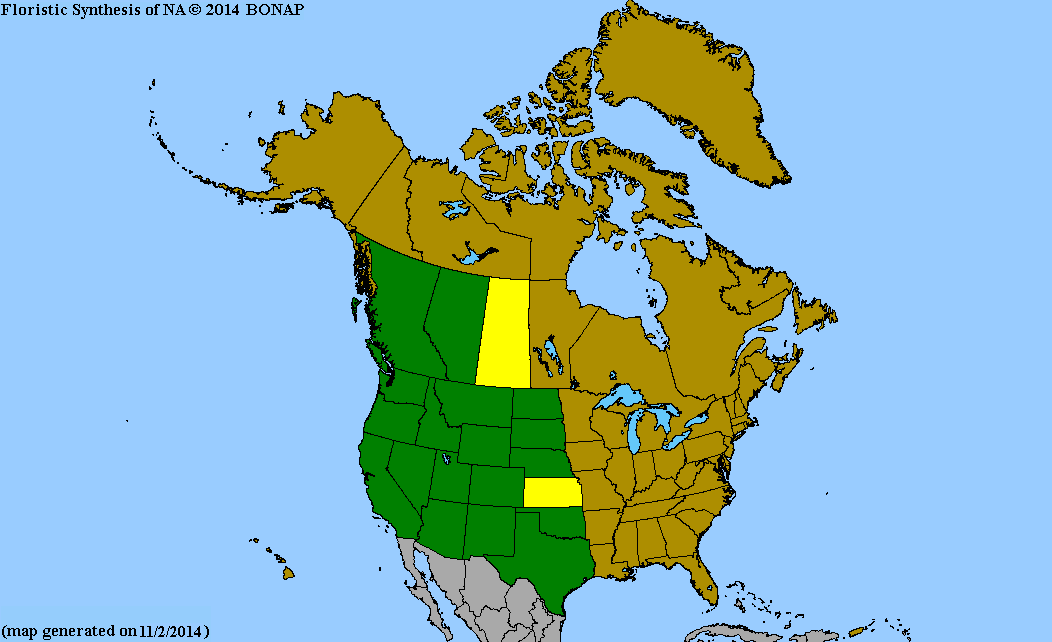
Map courtesy of The Biota of North America Program.
Map color key
Search Our Database: Enter any portion of the Scientific, Common Name, or both.
Do a general Google search of the entire site:
#ad
 Follow USWildflowers on Twitter
| | Site: Yellowstone Branch Line Trail, Warm River Campground, Caribou-Targhee National Forest, Fremont County, ID Date: 2019-August-23 | Photographer: Gerald C. Williamson
Nikon D7000
Tamron SP 90MM f/2.8 AF Macro | | The flowers of Silvery Lupine are a typical pea family shape. The petals are usually blue, but may be lavender, pink, or white. They have yellowish or white spot on the banner. The keel usually has ciliate margins. | | 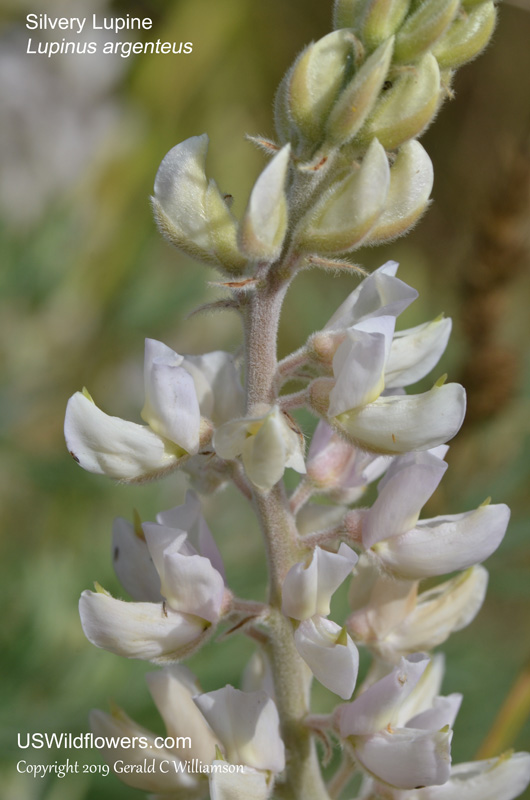
| | Site: Yellowstone Branch Line Trail, Warm River Campground, Caribou-Targhee National Forest, Fremont County, ID Date: 2019-August-23 | Photographer: Gerald C Williamson
Nikon D7000 | | Silvery Lupine has upright stems which are covered with dense silvery hairs. The plants may be quite short - as short as a few inches, or may grow up to as much as 5 feet tall. The flowers terminate the stems in inflorescences which may be up to 10 inches long with whorls of blue, lavender, pink, or white flowers. | | Click on the photo for a larger image
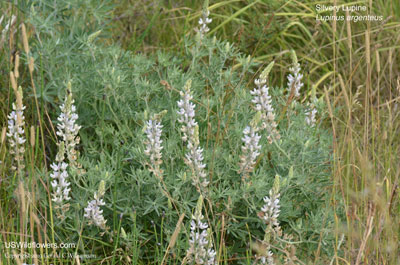
| | Site: Yellowstone Branch Line Trail, Warm River Campground, Caribou-Targhee National Forest, Fremont County, ID Date: 2019-August-23 | Photographer: Gerald C Williamson
Nikon D7000 | | The leaves of Lupinus argenteus are both basal and cauline, and are palmately compound with 5 to 9 leaflets. The leaflets are up to about 2.5 inches long, and usually less than .5 inch wide. They are silvery-hairy on the lower side, usually so on the upper surface. | | Click on the photo for a larger image
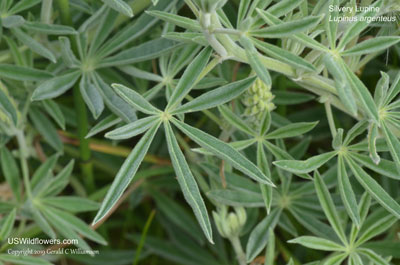
| | Site: Yellowstone Branch Line Trail, Warm River Campground, Caribou-Targhee National Forest, Fremont County, ID Date: 2019-August-23 | Photographer: Gerald C Williamson
Nikon D7000 | | The fruit of Silvery Lupine is a pod up to about an inch and a quarter long, containing 2 to 6 seeds. | | Click on the photo for a larger image
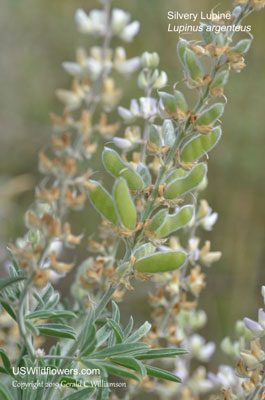
|
References used for identification and information:
|
|
| |
| #ad
|
|






